Don’t Worry About Watering – 17 Drought-Tolerant Plants That Are Natural Survivors

Reviewed By COLIN SKELLY

Colin is a Horticulturist and Horticultural Consultant with experience in a range of practical and managerial roles across heritage, commercial and public horticulture. He holds the Royal Horticultural Society’s Master of Horticulture award and has a particular interest in horticultural ecology and naturalistic planting for habitat and climate resilience.
Water is known as the staff of life, but some plants lean on it less heavily than others.
Although precipitation isn’t something that British gardens have traditionally lacked, hosepipe bans during the height of summer are not uncommon.1Arasteh, A. (n.d.). What can’t you do under a hosepipe ban? Check your postcode to see which rules are in place. The Telegraph. Retrieved March 15, 2023, from https://www.telegraph.co.uk/news/0/hosepipe-ban-uk-2022-area-rules-south-east-water-when/
What’s more, the onset of climate change could mean that prolonged periods of warm, dry weather become more commonplace in the coming months and years.2Heat Waves and Climate Change. (2022, July 27). Center for Climate and Energy Solutions. Retrieved March 15, 2023, from https://www.c2es.org/content/heat-waves-and-climate-change/
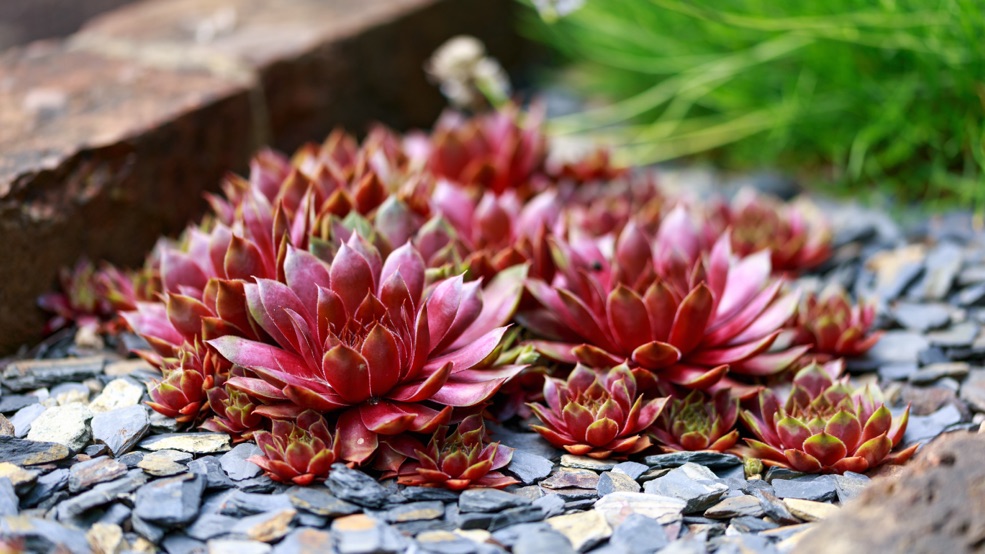
For that reason, it might make sense to select drought-resistant plants to populate your sunny borders and outdoor displays.
Not only will they be able to hold up during extended hot spells, but they also mean that you can head off on holiday for weeks at a time without worrying that your garden will wilt in your absence.
Of course, they also offer the additional advantage of simply being lower maintenance.
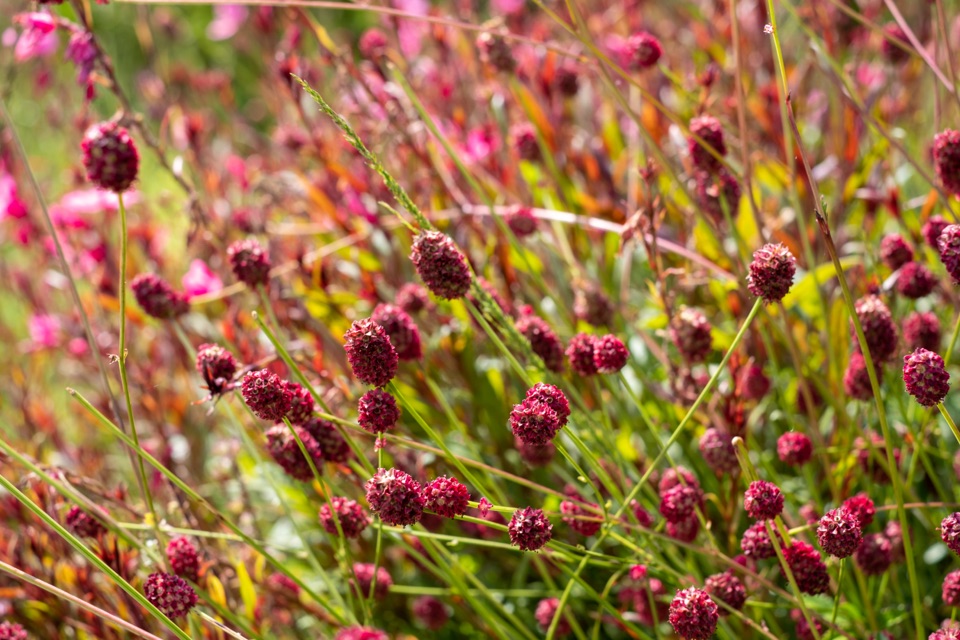
For those green-fingered enthusiasts who find the task of individually watering all of their specimens a little on the back-breaking side, or for those who prefer a less hands-on approach, drought-resistant plants can be a godsend.
“There is an important difference between drought-resistant and drought-tolerance,” shares Horticultural Consultant Colin Skelly.
“The plants in this list are adapted to cope well with periods of hot, dry weather. However, periods of weeks of dry conditions and high temperatures will negatively impact on their health.
“In those conditions, irrigation in the early morning or evening will benefit the plants, thoroughly wetting the soil at the base of the plant.”
Fortunately, there are a variety of cultivars which naturally thrive in drier conditions, making them an ideal option for any of the above scenarios.
Here’s our pick of some of the best of the bunch to inspire your display and keep things colourful, even when the mercury rises and the rain clouds disperse:
1) Artemisia
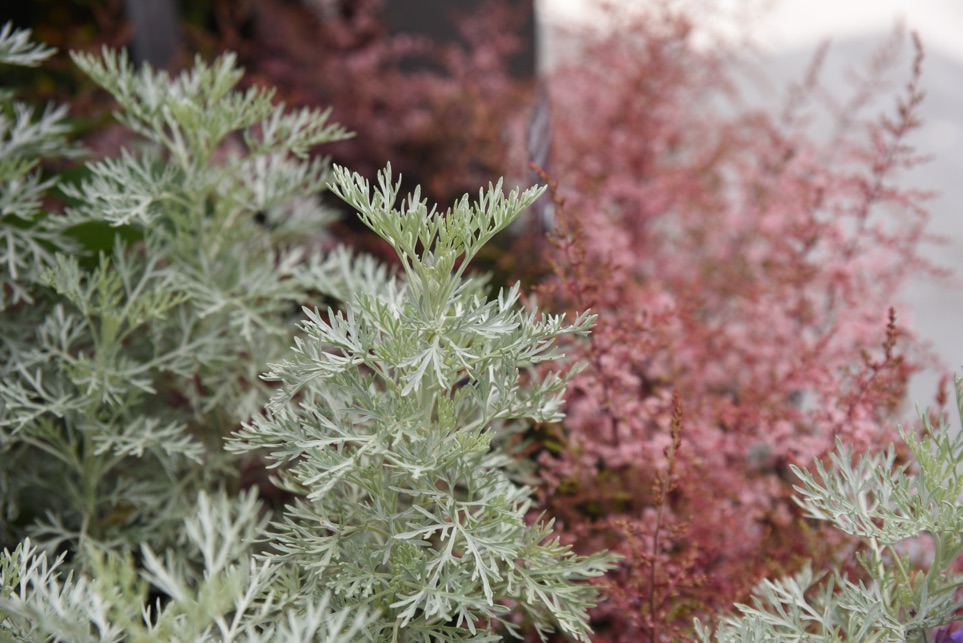
- COMMON NAME (S): Mugwort
- HARDINESS RATING: H6
- PLANT TYPE: Herbaceous perennial
- FOLIAGE TYPE: Deciduous
- FLOWERING SEASON(S): Summer
- SUNLIGHT: Full Sun / Partial Shade
- SOIL PREFERENCE: Loam, Chalk, Sand; Any pH
- SIZE: 1.5-2.5m in height, 0.5-1m spread
Not only is artemisia pleasing on the eye and palatable on the nostrils, but it’s also incredibly easy to cultivate, too.
The delicate silver foliage provides the perfect foil to almost any other plant in its vicinity and is definitely the star of the show.
In fact, some gardeners prefer to prune the unspectacular yellow blossoms which appear in late summer altogether, in favour of foregrounding the feathery loveliness of the plant’s leaves.
2) Bearded Iris
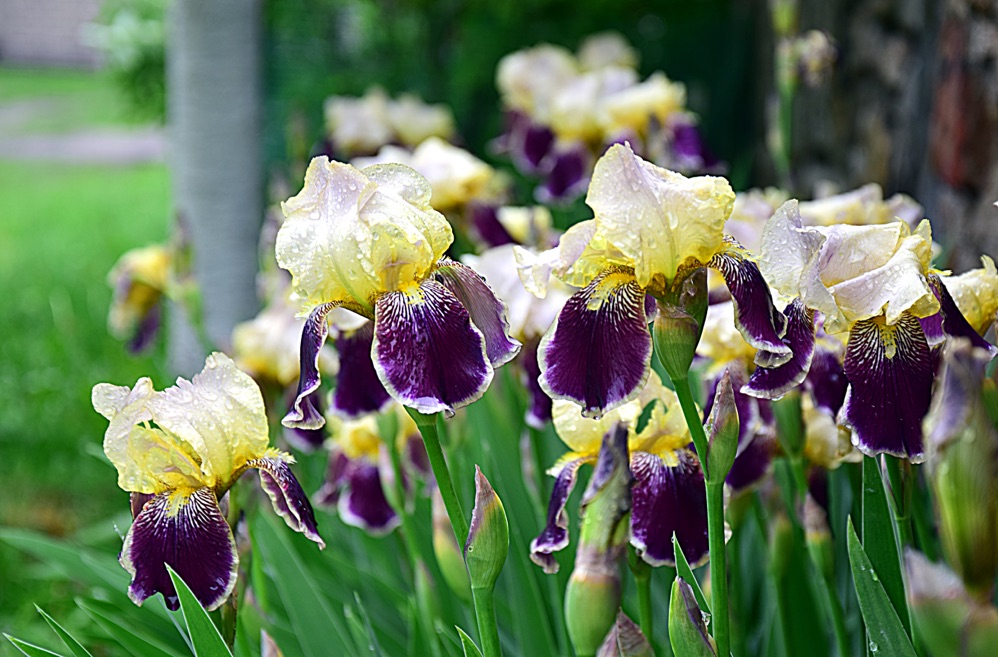
- BOTANICAL NAME: Iris germanica
- COMMON NAME (S): Bearded Iris
- HARDINESS RATING: H6
- PLANT TYPE: Perennial
- FOLIAGE TYPE: Evergreen
- FLOWERING SEASON(S): Spring
- SUNLIGHT: Full Sun / Partial Shade
- SOIL PREFERENCE: Chalk, loam, sand; alkaline / neutral pH
- SIZE: 0.5-1m in height, 0.1-0.5m spread
Bearded irises are excellent at withstanding long periods without water, and they’re also incredibly resilient against pests and diseases.
To ensure they flourish to their full potential, simply point the rhizome in a southerly direction to prevent its foliage from shading the rest of the plant.3Rhizome | Description, Functions, & Examples. (2023, March 6). Encyclopedia Britannica. Retrieved March 15, 2023, from https://www.britannica.com/science/rhizome
Doing so will reward you with beautiful displays of distinctive drooping petals which give the plant its name.
There are a wide variety of cultivars and colours available that would be wonderous in any UK garden.
3) Black-Eyed Susan
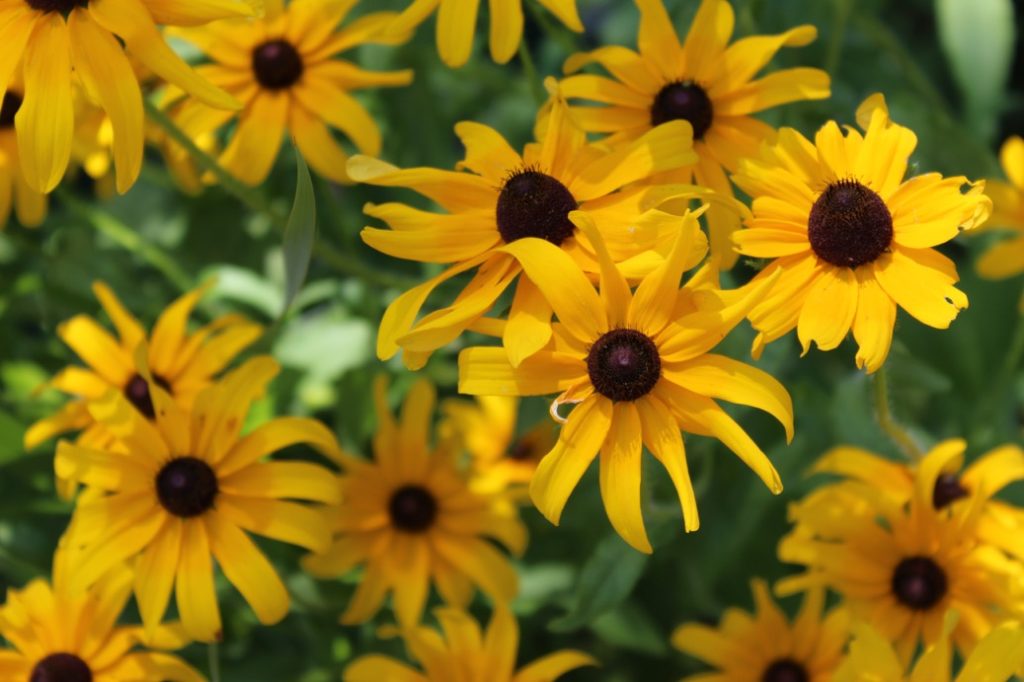
- BOTANICAL NAME: Rudbeckia fulgida
- COMMON NAME (S): Black-eyed Susan
- HARDINESS RATING: H6
- PLANT TYPE: Perennial
- FOLIAGE TYPE: Deciduous
- FLOWERING SEASON(S): Summer / Autumn
- SUNLIGHT: Full Sun / Partial Shade
- SOIL PREFERENCE: Clay, loam, sand; any pH
- SIZE: 0.5-1m in height, 0.1-0.5m spread
Named for the dark stamen at the centre of its yellow blooms, Black-Eyed Susan is one of the easiest perennials to grow.
It will require thorough watering at the time of planting, but once established, it won’t need hardly any irrigation at all.
Capable of growing almost half a metre in height, black-eyed Susans are perfect for adding architectural intrigue and summer colour to the middle section of a flowering border.
4) Clematis viticella
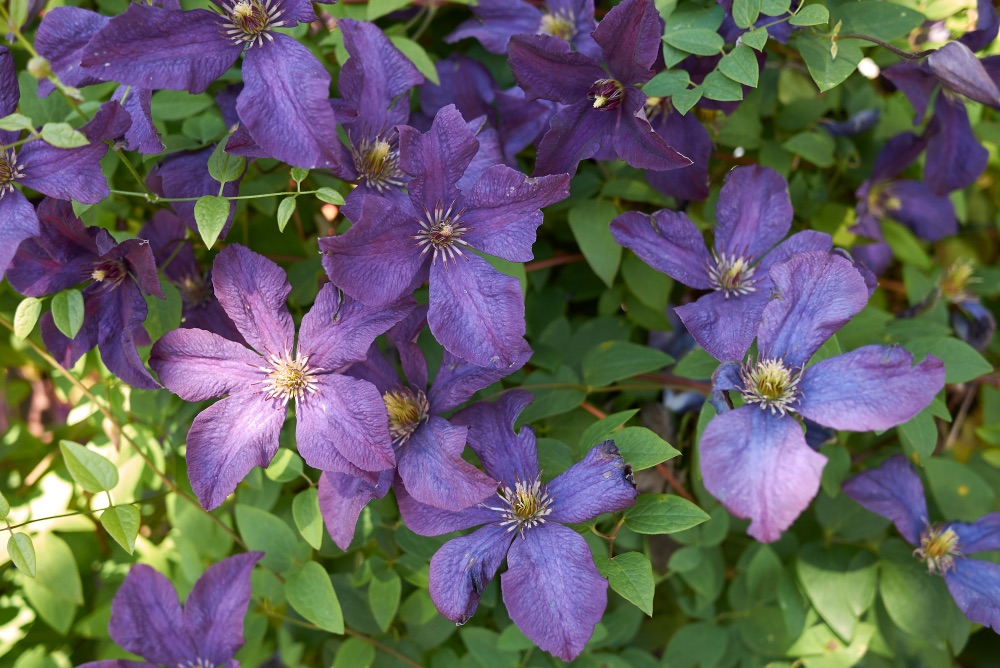
- BOTANICAL NAME: Clematis viticella
- COMMON NAME (S): Purple clematis
- HARDINESS RATING: H6
- PLANT TYPE: Climber
- FOLIAGE TYPE: Deciduous
- FLOWERING SEASON(S): Summer / Autumn
- SUNLIGHT: Full Sun / Partial Shade
- SOIL PREFERENCE: Any soil type; alkaline / neutral pH
- SIZE: 2.5-4m in height, 1-1.5m spread
Although some species of clematis are more drought-tolerant than others, the Viticella group of climbers are some of the best-performing options in this respect.
They’re vigorous and versatile growers that can reach up to five metres in height and can be trained along trellises, fences or any other structural support you have in mind.
Both flowers and foliage are smaller and daintier than some of their brethren, but they produce profuse amounts of blossoms over an extended period from midsummer to autumn, making them a great choice for prolonged colour.
5) Diascia
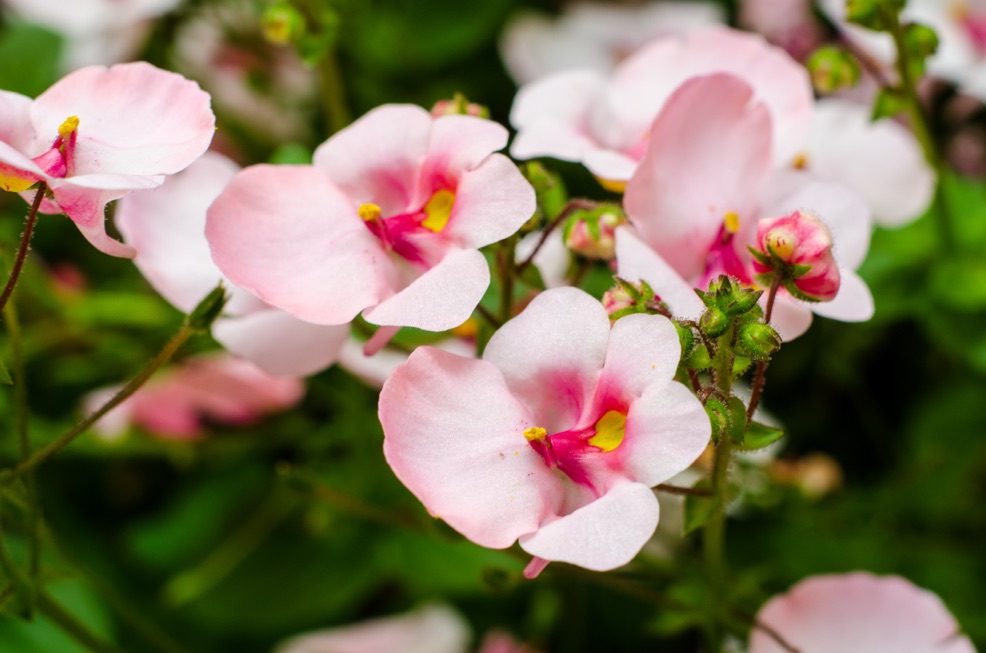
- BOTANICAL NAME: Diascia
- COMMON NAME (S): Twinspur
- HARDINESS RATING: H3
- PLANT TYPE: Annual / Perennial
- FOLIAGE TYPE: Semi-Evergreen
- FLOWERING SEASON(S): Summer / Autumn
- SUNLIGHT: Full Sun / Partial Shade
- SOIL PREFERENCE: Any soil type; any pH
- SIZE: 0.1-0.5m in height, 0.1-0.5m spread
Native to South Africa, diascias have traditionally had to deal with far less accommodating climates than those found in the UK.
But while they don’t mind working up a thirst, they don’t do too well in extreme cold, so consider moving them inside during winter.
Fortunately, they thrive best in containers, pots and hanging baskets, which facilitates their movement no end.
Having said that, they will do well in borders if the temperature doesn’t drop too sharply in the colder months.
6) Echeveria
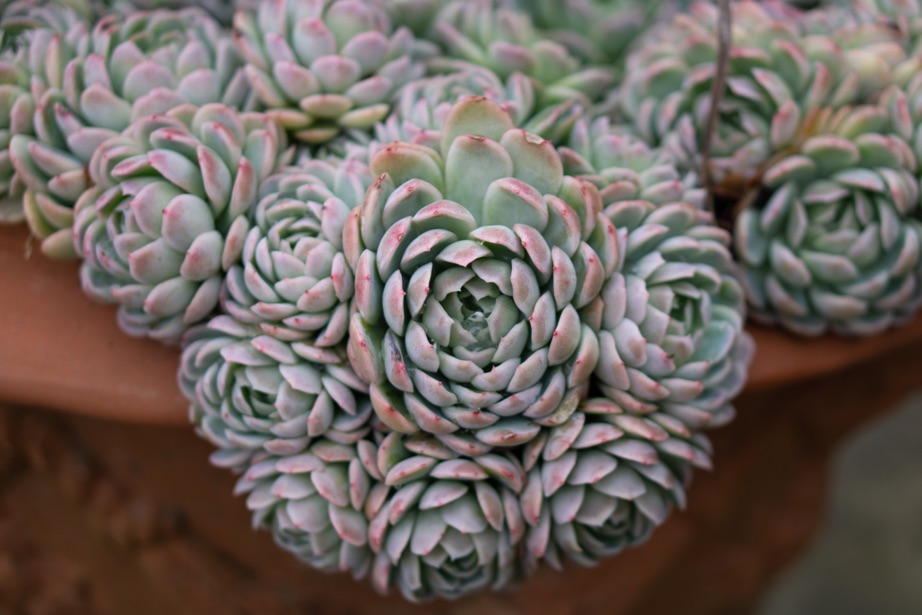
- BOTANICAL NAME: Echeveria
- COMMON NAME (S): Hen-and-chicks
- HARDINESS RATING: H2
- PLANT TYPE: Succulent
- FOLIAGE TYPE: Evergreen
- FLOWERING SEASON(S): Winter / Spring
- SUNLIGHT: Full Sun / partial Shade
- SOIL PREFERENCE: Loam, sand; any pH
- SIZE: 0.1-0.5m in height, 0.1-0.5m spread
These stunning succulents come in a range of different shapes, sizes and colours, but all of them will take your breath away with their unusual and inimitable beauty.
Take care to avoid touching the leaves when handling echeveria, since the bloom which lies upon them acts as their protection against the strong rays of the sun.
7) Geum
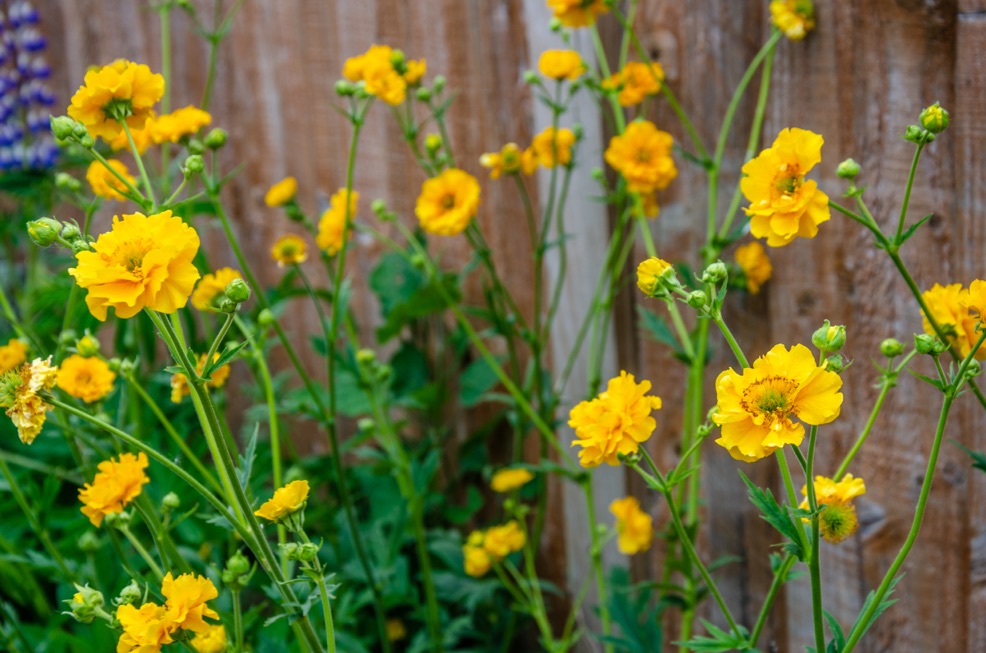
- BOTANICAL NAME: Geum
- COMMON NAME (S): Avens
- HARDINESS RATING: H7
- PLANT TYPE: Perennial
- FOLIAGE TYPE: Semi-Evergreen
- FLOWERING SEASON(S): Spring / Summer / Autumn
- SUNLIGHT: Full Sun / Partial Shade
- SOIL PREFERENCE: Any soil type; any pH
- SIZE: Up to 50cm in height, 0.1-0.5m spread
These compact and hardy perennials will appreciate some organic mulch around their base to help them conserve hydration, but other than that, they can do admirably well when left to their own devices.
They flower for a lengthy period between late spring and early autumn, so prune them back after the first blossoms die away to encourage a second spurt of growth.
They look best when several different varieties and colours are planted alongside one another.
8) Hardy Geranium
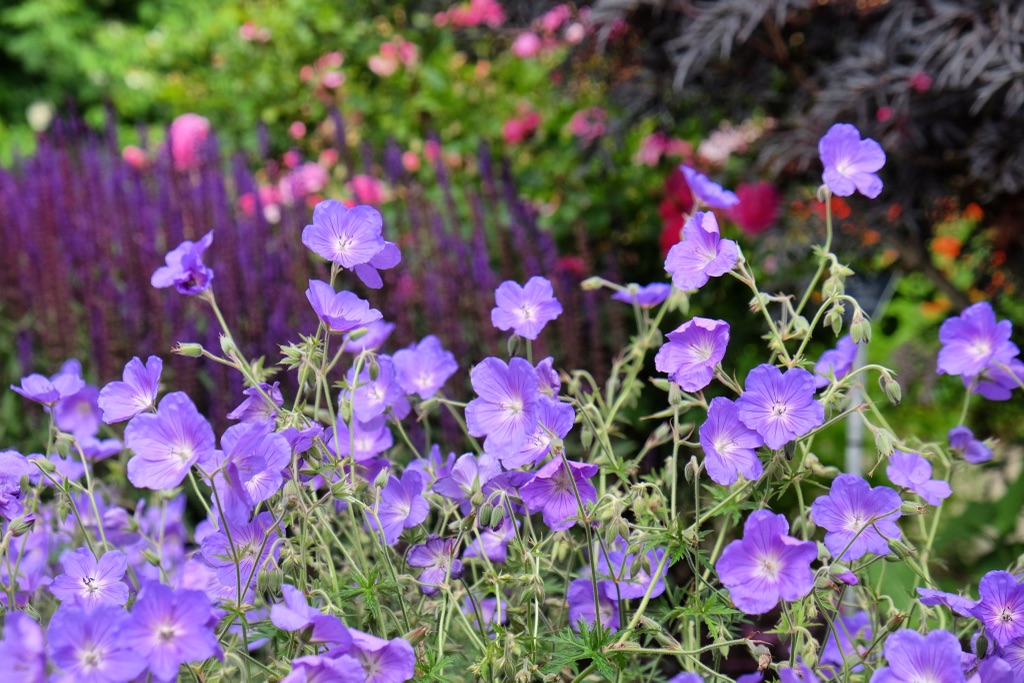
- BOTANICAL NAME: Geranium sylvaticum
- COMMON NAME (S): Cranesbill Geranium
- HARDINESS RATING: H6-H7
- PLANT TYPE: Perennial
- FOLIAGE TYPE: Deciduous
- FLOWERING SEASON(S): Spring / Summer / Autumn
- SUNLIGHT: Full Sun / Partial Shade
- SOIL PREFERENCE: Any soil type; any pH
- SIZE: 0.1-1m in height, 0.1-1m spread
What’s not to like about hardy geraniums?
They’re incredibly robust little plants which can stand up well to drought, pests and diseases, while their prolific blossoms are complemented perfectly by the interesting texture of their foliage.
It’s no surprise then, that hardy geraniums are one of the top picks when it comes to sourcing drought-resistant plants for your garden.
The award-winning ‘Orion’ cultivar has one of the longest flowering seasons of its ilk.4Geranium “Orion.” (n.d.). Royal Horticultural Society. Retrieved March 15, 2023, from https://www.rhs.org.uk/plants/137507/geranium-orion/details
9) Judas Tree
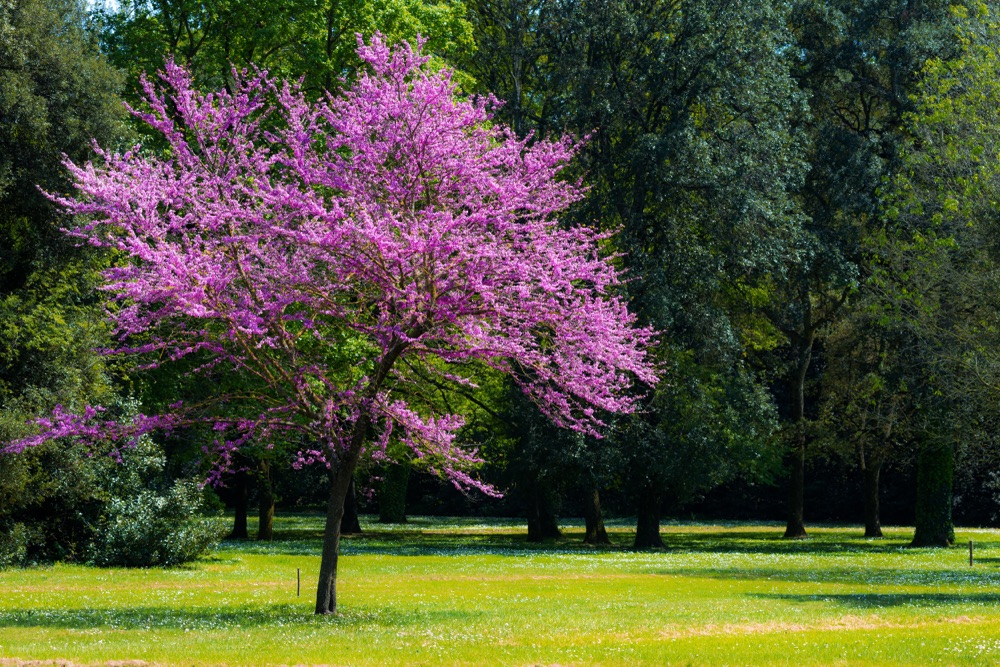
- BOTANICAL NAME: Cercis siliquastrum
- COMMON NAME (S): Judas Tree
- HARDINESS RATING: H5
- PLANT TYPE: Tree
- FOLIAGE TYPE: Deciduous
- FLOWERING SEASON(S): Spring
- FRUIT SEASON(S): Autumn
- SUNLIGHT: Full Sun / Partial Shade
- SOIL PREFERENCE: Any soil type; any pH
- SIZE: 8-12m in height, 4.5-10m spread
The origins of this tree stretch back incredibly far, with fossil testing dating it at least 45 million years old.5Judas Tree. (n.d.). Bartlett Tree Experts. Retrieved March 15, 2023, from https://www.bartlett.com/resources/tree-species/judas-tree
Over that time, the tree has learned to deal with an inclement weather event or two.
It hails from south-eastern Europe and western Asia and although it prefers the warmer microclimates of those regions, it will tolerate the British weather just fine – with or without regular irrigation.6Cercis siliquastrum —The Judas Tree. (n.d.-b). Arboretum Foundation. Retrieved March 15, 2023, from https://www.arboretumfoundation.org/wp-content/uploads/2010/11/anderson_judas-tree.pdf
10) Lavender
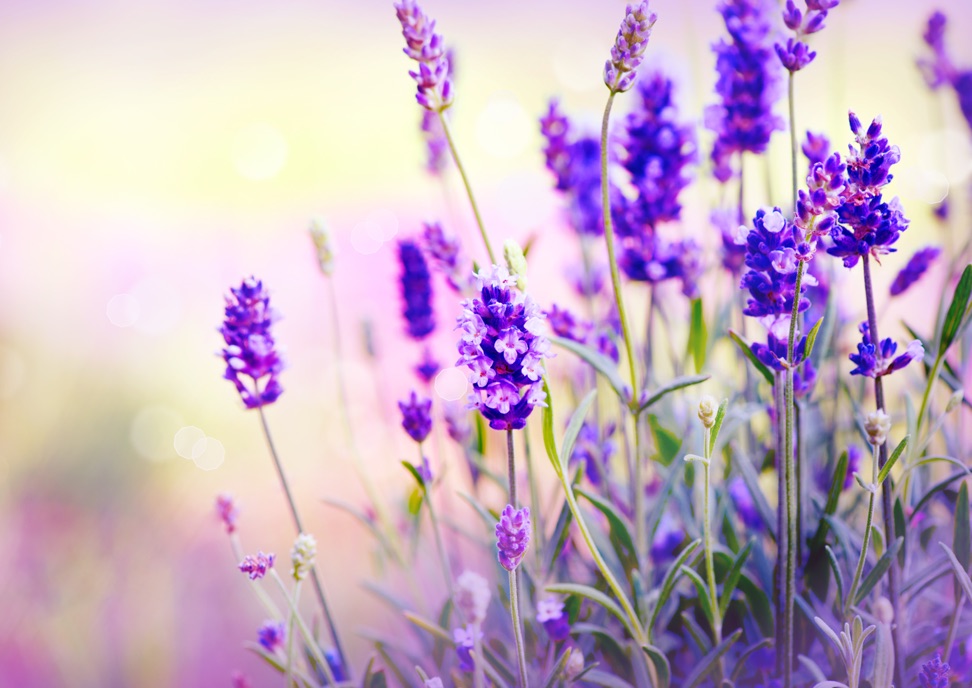
- BOTANICAL NAME: Lavandula
- COMMON NAME (S): Lavender
- HARDINESS RATING: H5
- PLANT TYPE: Shrub
- FOLIAGE TYPE: Evergreen
- FLOWERING SEASON(S): Spring / Summer
- SUNLIGHT: Full Sun
- SOIL PREFERENCE: Chalk, loam, sand; neutral / alkaline pH
- SIZE: Up to 60cm in height, up to 1m spread
Lavender is universally lauded for the enchanting fragrance of its flowers and its calming properties.
That laid-back nature extends to its cultivation too, since its Mediterranean roots mean it can handle drought with no problem at all.7Lavenders for Drought Tolerant Gardens. (n.d.). Master Gardener. Retrieved March 15, 2023, from https://ucanr.edu/datastoreFiles/268-690.pdf
All lavenders are popular with bees, butterflies and other pollinators and their aromatic qualities make them ideal for planting alongside pathways or near benches.
Different spreads, heights and blooming periods are available depending on the cultivar in question.
11) Mexican Feather Grass
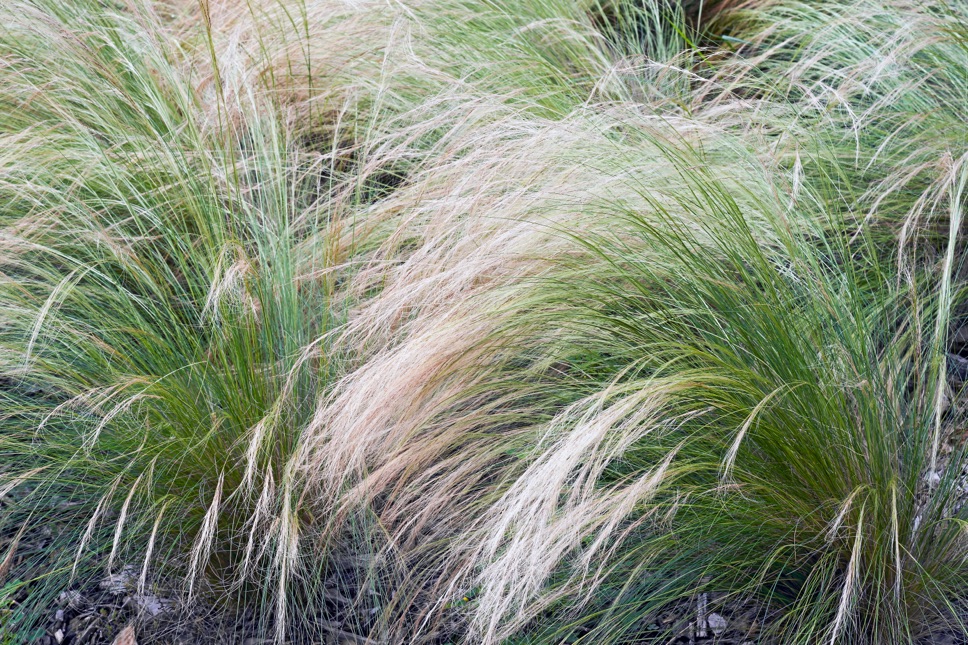
- BOTANICAL NAME: Stipa tenuissima
- COMMON NAME (S): Mexican Feather Grass
- HARDINESS RATING: H4
- PLANT TYPE: Grass
- FOLIAGE TYPE: Deciduous
- FLOWERING SEASON(S): Summer
- SUNLIGHT: Full Sun
- SOIL PREFERENCE: Any soil type; any pH
- SIZE: 0.5-1m in height, 0.1-0.5m spread
The gently cascading fronds of Mexican feather grass dance gracefully in a breeze, explaining its widespread popularity across the UK.
Add to that the fact that it’s extremely resistant to drought and it’s not hard to see why it’s a universal favourite.
It works especially well in gravel gardens or at the rear of flower beds and borders.
Just be mindful that the seeds have a tendency to be blown every which way by the wind and can propagate remarkably quickly, so be vigilant to avoid an invasion.
12) Pittosporum
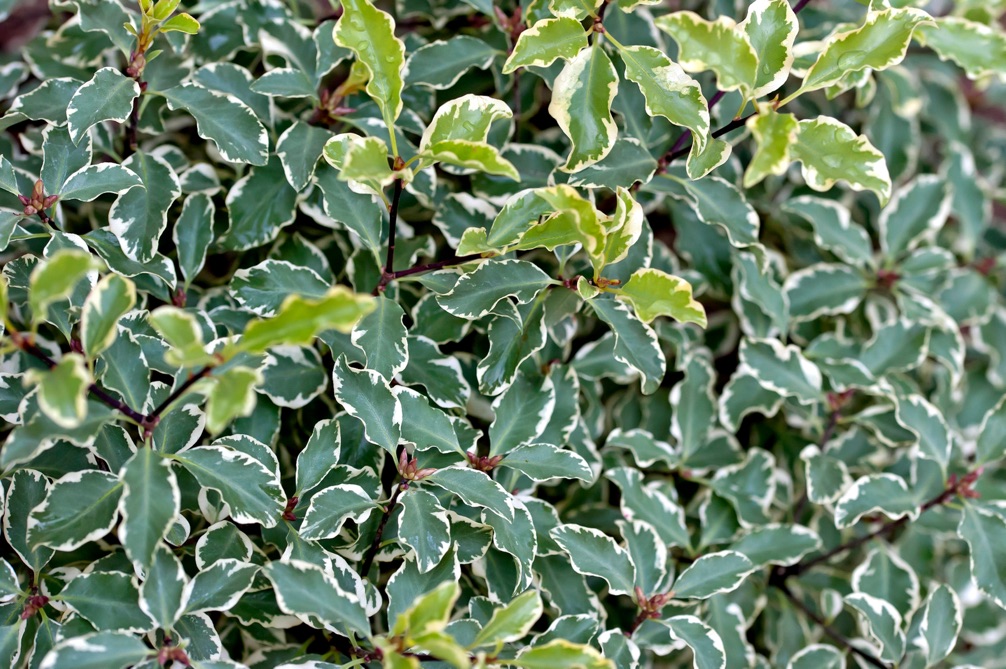
- BOTANICAL NAME: Pittosporum
- COMMON NAME (S): Cheesewood
- HARDINESS RATING: H4-H5
- PLANT TYPE: Shrub
- FOLIAGE TYPE: Evergreen
- FLOWERING SEASON(S): Spring / Summer
- SUNLIGHT: Full Sun / Partial Shade
- SOIL PREFERENCE: Any soil type; any pH
- SIZE: Up to 3m in height, up to 1.5m spread
If you’re simply looking for year-round cover and colour (without floral blossoms), you can’t go far wrong with pittosporum.
It’s highly resistant to both drought and heat, though it doesn’t enjoy colder climes quite so much, so keep it sheltered from bracing winds.
There is a range of cultivars to choose from with this attractive evergreen shrub, each offering different shades and shapes of green on their leaves.
The P. tenuifolium ‘Victoria’ option features pleasing variegation on its foliage, with newer shoots a delightfully lighter hue than more established counterparts.
13) Russian Sage
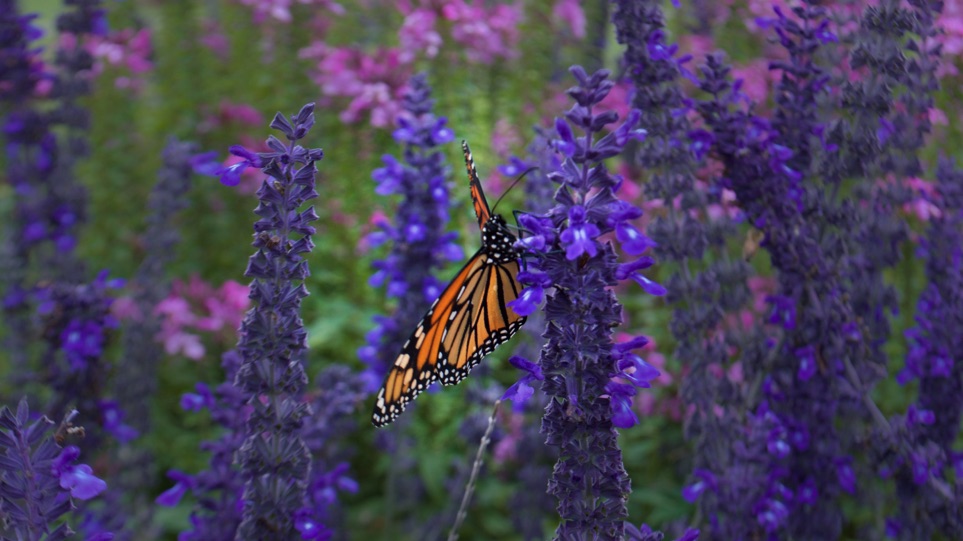
- BOTANICAL NAME: Salvia yangii
- COMMON NAME (S): Russian Sage
- HARDINESS RATING: H5
- PLANT TYPE: Perennial
- FOLIAGE TYPE: Deciduous
- FLOWERING SEASON(S): Summer / Autumn
- SUNLIGHT: Full Sun
- SOIL PREFERENCE: Chalk, loam, sand; any pH
- SIZE: 1.5m in height, 0.5m spread
Cultivated since the beginning of the 20th century, Russian sage is a curious case in that it neither hails from Russia nor is it a true member of the sage family.8Perovskia atriplicifolia | Russian sage. (n.d.). Royal Horticultural Society. Retrieved March 15, 2023, from https://www.rhs.org.uk/plants/12557/perovskia-atriplicifolia/details
It’s likely that it earned its popular moniker due to its use as an ingredient in cocktails with vodka as their base.9The Cocktail Drinker’s Guide to Gardening. (2021, May 19). FrenchEntrée. Retrieved March 15, 2023, from https://www.frenchentree.com/living-in-france/local-life/gardening/the-cocktail-drinkers-guide-to-gardening-2/
In any case, this incredibly hardy specimen certainly seems as though it has steeled itself with some Dutch courage against the elements.
Apparently impervious to excessive heat, cold and drought, as well as high salt content and poor-quality soil, Russian sage bears all its travails with its attractive silver foliage and brilliant blue blooms.
14) Sea Holly
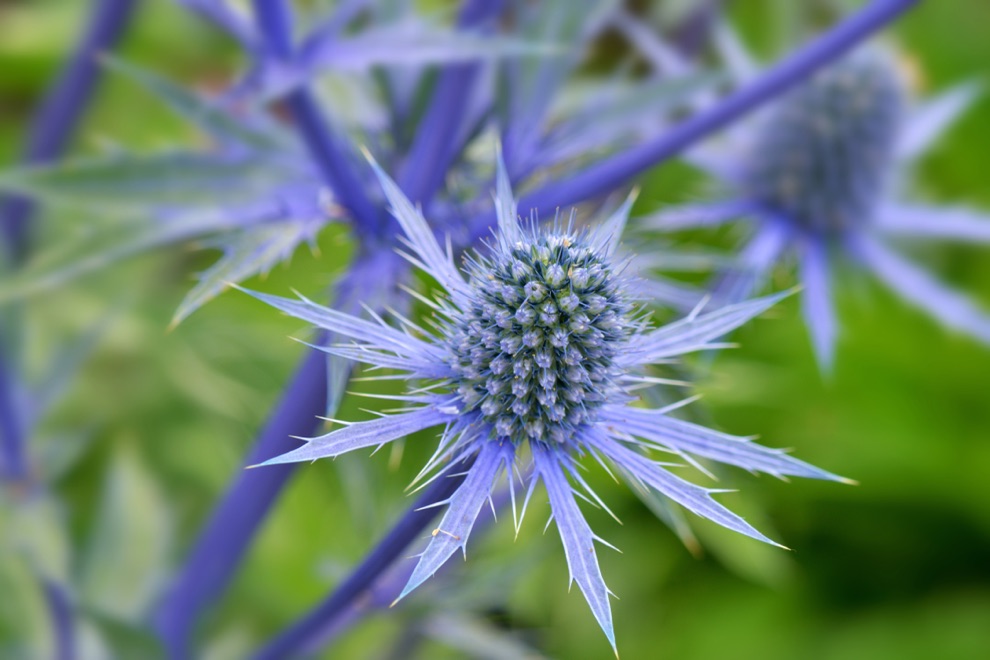
- BOTANICAL NAME: Eryngium
- COMMON NAME (S): Sea Holly
- HARDINESS RATING: H5
- PLANT TYPE: Perennial
- FOLIAGE TYPE: Deciduous
- FLOWERING SEASON(S): Summer
- SUNLIGHT: Full Sun
- SOIL PREFERENCE: Sand; alkaline / neutral soil
- SIZE: Up to 60cm in height, up to 30cm spread
The lengthy tap roots of sea holly make it adept at ferreting out water sources deep beneath the ground, meaning it isn’t fussed about missing out on rainfall or irrigation from above too much.
What’s more, the spiky, steely blue of its leaves, topped by spherical cones of blue flowers, make it look almost like an imitation thistle.
Its imposing height means it’s an excellent choice for providing a shock of colour to the rear of borders or in front of fences.
15) Sedum
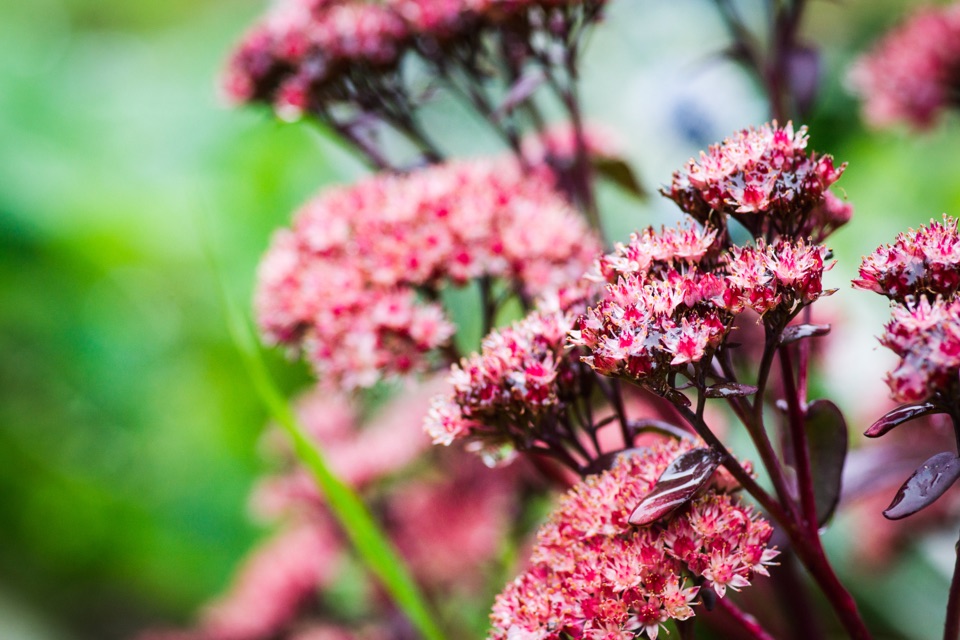
- BOTANICAL NAME: Sedum
- COMMON NAME (S): Stonecrop
- HARDINESS RATING: H7
- PLANT TYPE: Succulent
- FOLIAGE TYPE: Evergreen
- FLOWERING SEASON(S): Summer
- SUNLIGHT: Full Sun
- SOIL PREFERENCE: Chalk, loam, sand; alkaline / neutral pH
- SIZE: 60cm in height, 60cm spread
Sedums are succulents which come in a quite staggering array of heights, shapes and styles.
From creeping stonecrops which offer impeccable ground coverage to upright specimens which add levels to your display, there’s something for every type of xeriscaping garden you can think of.
Best of all, they’ll flourish regardless of hydration levels, making a mockery of the idea that water is crucial to all life.
In fact, some species will even change colour depending on how thirsty they are, bringing a fascinating flux to your outdoor aesthetic.10RHS Garden Hyde Hall. (n.d.). Royal Horticultural Society. Retrieved March 15, 2023, from https://www.rhs.org.uk/gardens/hyde-hall
16) Sempervivum
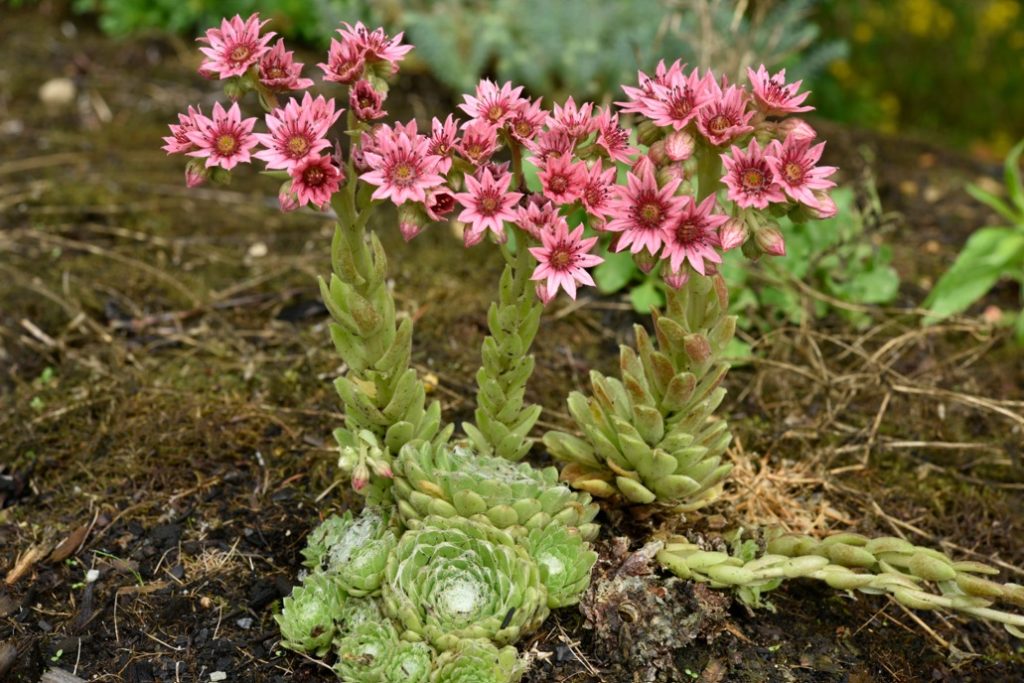
- BOTANICAL NAME: Sempervivum
- COMMON NAME (S): Houseleek
- HARDINESS RATING: H7
- PLANT TYPE: Perennial
- FOLIAGE TYPE: Evergreen
- FLOWERING SEASON(S): Summer
- SUNLIGHT: Full Shade
- SOIL PREFERENCE: Loam, sand; any pH
- SIZE: Up to 10cm in height, 0.1-0.5m spread
Another family of incredibly resilient succulents, sempervivum makes an excellent companion plant to sedum.
They also require very little soil depth or quality to thrive, meaning they can lend themselves well to inventive and eye-catching decorative features like this one.
Also known as houseleek, sempervivums really only have one demand that they place upon you: full exposure to sunlight.
Other than that, they’ll flourish wherever you place them and however much attention you pay to them.
17) Star Jasmine
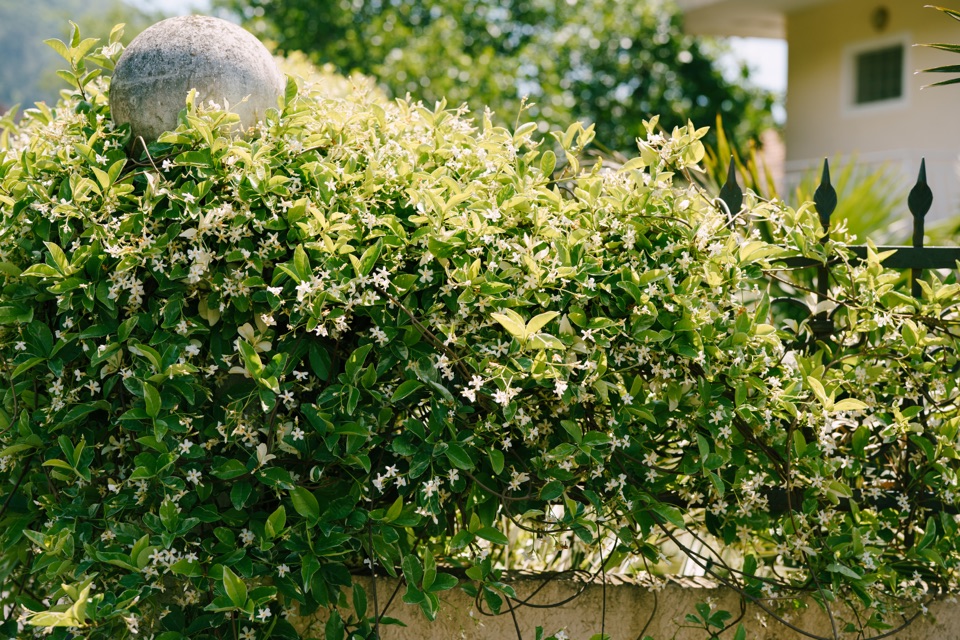
- BOTANICAL NAME: Trachelospermum jasminoides
- COMMON NAME (S): Star Jasmine
- HARDINESS RATING: H4
- PLANT TYPE: Climber
- FOLIAGE TYPE: Evergreen
- FLOWERING SEASON(S): Summer
- FRUIT SEASON(S): Autumn
- SUNLIGHT: Full Sun / Partial Shade
- SOIL PREFERENCE: Chalk, loam, sand; any pH
- SIZE: 8-12m in height, 4-8m spread
If it’s a hassle-free climber you’re looking for, star jasmine could be the ideal choice.
It will take plentiful watering and some maintenance to get it established and climbing along your chosen trellis, pergola or another preferred support system – but once it has taken root, there’s no stopping it.
Capable of reaching 6m when properly supported, the star-shaped white flowers of star jasmine provide a gorgeous focal point from late spring onwards, while its intoxicating fragrance is a delightful accompaniment to the visual display.
References
- 1Arasteh, A. (n.d.). What can’t you do under a hosepipe ban? Check your postcode to see which rules are in place. The Telegraph. Retrieved March 15, 2023, from https://www.telegraph.co.uk/news/0/hosepipe-ban-uk-2022-area-rules-south-east-water-when/
- 2Heat Waves and Climate Change. (2022, July 27). Center for Climate and Energy Solutions. Retrieved March 15, 2023, from https://www.c2es.org/content/heat-waves-and-climate-change/
- 3Rhizome | Description, Functions, & Examples. (2023, March 6). Encyclopedia Britannica. Retrieved March 15, 2023, from https://www.britannica.com/science/rhizome
- 4Geranium “Orion.” (n.d.). Royal Horticultural Society. Retrieved March 15, 2023, from https://www.rhs.org.uk/plants/137507/geranium-orion/details
- 5Judas Tree. (n.d.). Bartlett Tree Experts. Retrieved March 15, 2023, from https://www.bartlett.com/resources/tree-species/judas-tree
- 6Cercis siliquastrum —The Judas Tree. (n.d.-b). Arboretum Foundation. Retrieved March 15, 2023, from https://www.arboretumfoundation.org/wp-content/uploads/2010/11/anderson_judas-tree.pdf
- 7Lavenders for Drought Tolerant Gardens. (n.d.). Master Gardener. Retrieved March 15, 2023, from https://ucanr.edu/datastoreFiles/268-690.pdf
- 8Perovskia atriplicifolia | Russian sage. (n.d.). Royal Horticultural Society. Retrieved March 15, 2023, from https://www.rhs.org.uk/plants/12557/perovskia-atriplicifolia/details
- 9The Cocktail Drinker’s Guide to Gardening. (2021, May 19). FrenchEntrée. Retrieved March 15, 2023, from https://www.frenchentree.com/living-in-france/local-life/gardening/the-cocktail-drinkers-guide-to-gardening-2/
- 10RHS Garden Hyde Hall. (n.d.). Royal Horticultural Society. Retrieved March 15, 2023, from https://www.rhs.org.uk/gardens/hyde-hall

